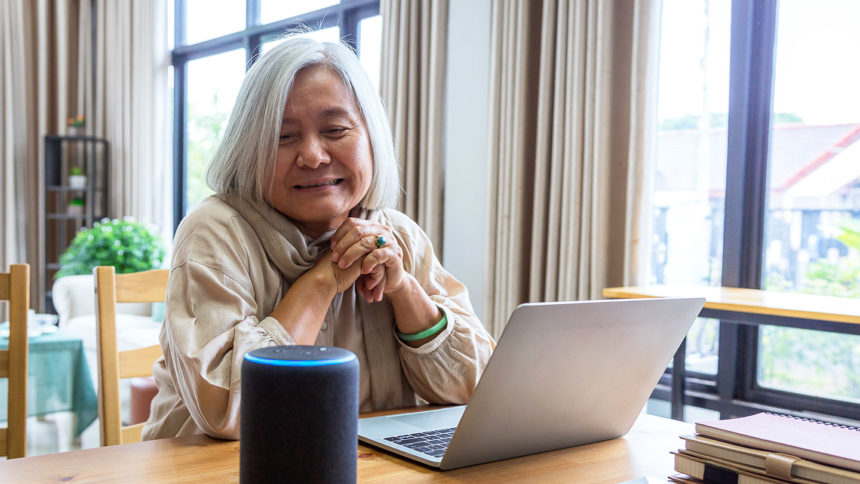
(Credit: Six_Characters)
Resident engagement and safety are two areas where technology can improve quality of life and create meaningful experiences, but not in the way you might think, according to K4Connect co-founder and CEO Scott Moody.
In its second quarterly insights report, the technology company looked at the role of technology in helping operators navigate post-pandemic life in their communities. Moody said the report recognizes areas where technology adds value while also showing where operators can implement solutions to better meet the needs of their residents.
“We hear a lot about engagement and safety in senior living — and that became particularly true during COVID,” he told McKnight’s Senior Living. But in looking at the results of the company’s fall 2021 technology insights report, he said, he wonders if people are thinking about those two areas in the right way.
Although community leaders are looking at resident engagement as a measure of participation in activities, residents are looking at friendships and connections with other residents as a measure of their happiness and satisfaction.
The survey found that living in a senior living community helped to combat loneliness for older adults — 70% of residents said they were rarely or never lonely, and 82% said living in a community reduced their level of loneliness.
Twenty-three percent said loneliness was most prevalent in the evening. Moody said that corresponds to drops in staffing levels and community activities.
He said he looks at digital connections — such as searchable digital directories, video chat, messaging — as a way to foster physical connections. He added that too often, the focus is on who is engaging with a platform and who is going to activities. Instead, he said, the focus should be on those who do not participate.
“They are more lonely and more likely to leave a rental community because they don’t know anyone. They don’t go to activities,” Moody said. “They probably don’t know most of their neighbors. Nothing is keeping them there,” he added.
The survey found that residents who are engaged in their communities and develop friendships are more likely to stay, Moody said. “I’m more likely to stay in a community if all my friends are here, not if they have a good yoga class,” he said.
Based on that revelation, Moody said, K4Connect probably will ramp up its programming that can help residents find each other based on common interests and that help foster personal connections.
Feeling safer
When it comes to resident safety, crucial areas for technology include resident visibility, automatic alerting and fall risk mitigation.
Tom Whitaker, executive director for The Carrington at Lincolnwood, which won the Gold award in the Keep It Super Simple category in the Senior Living track of the 2021 McKnight’s Excellence in Technology Awards, implemented K4Connect’s invisible check-in system in its stand-alone independent living community beginning in April.
The technology is placed inside existing light switches and alerts staff members twice a day if no movement is detected in an apartment.
“All the residents have to do is get up and go about their day as they normally would. They don’t have to pull a pull cord, press a button, open the front door or call someone,” Whitaker told McKnight’s Senior Living.
He said 97% of the residents there are automatically checked in during each window of time, meaning staff have to call or physically check on only 3% of residents in a given day. The technology has been installed in 188 of the community’s 251 apartments so far.
According to the K4Connect survey, 80% of resident survey respondents said that automated check-in programs helped them feel safer, whereas 73% of staff members also said that they contributed to increased safety and risk management in the community in which they work.
Staff members also said the technology saves time by simplifying resident check-ins (71%) and increasing resident visibility (64%).
Other safety features that can be addressed through technology are fall detection alert systems. The survey delivered mixed results related to them, however.
Although 80% of respondents said that they saw value in fall detection systems, only 25% said they were willing to have one installed in their apartment. Moody said that people like the idea of fall detection systems, but they don’t want to be “spied on.”
“People don’t like to be told on,” Moody said, adding that the challenge is providing a level of safety, but doing it in a “non-Big Brother kind of way.”




